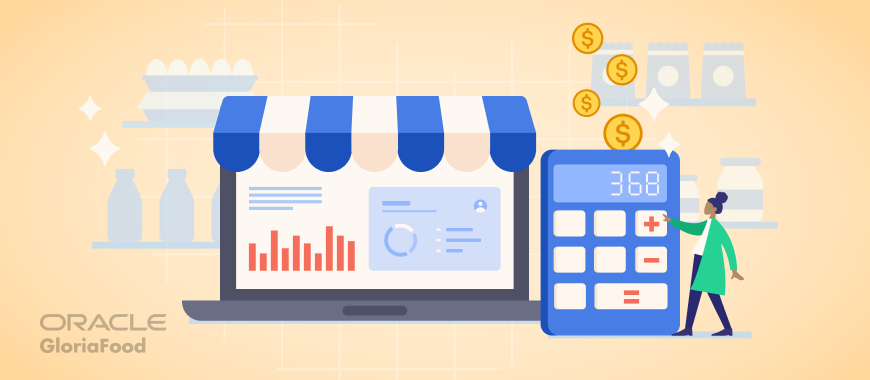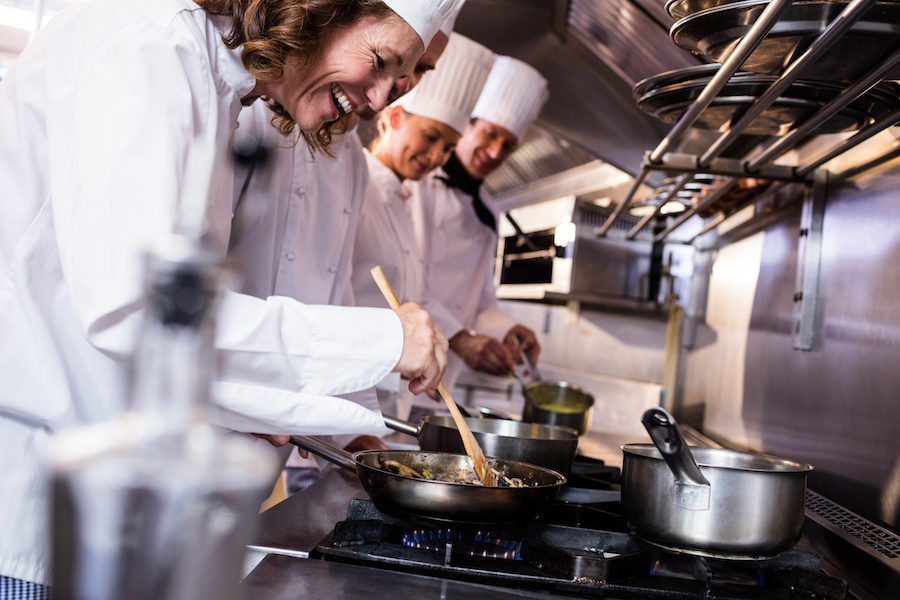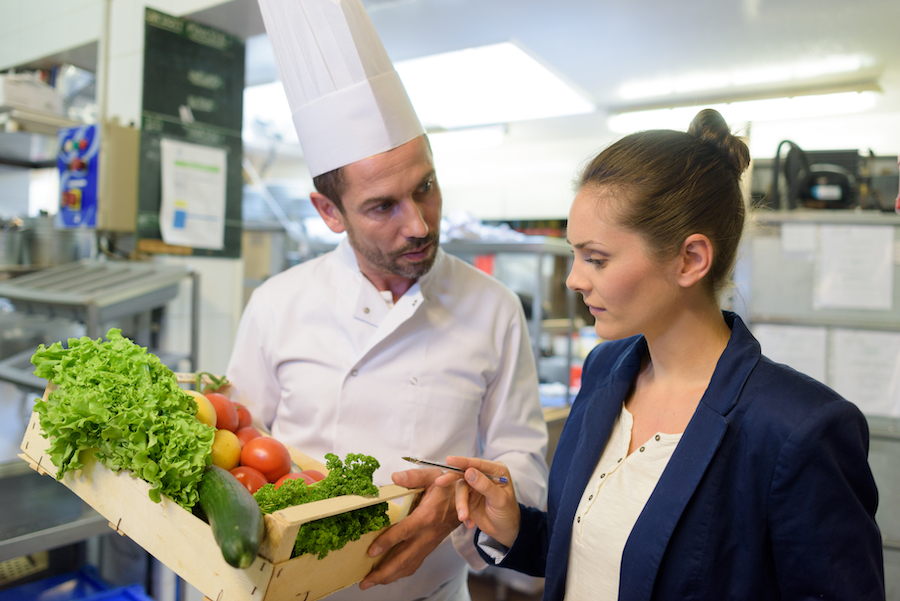If it feels like you’re spending too much money on ingredients at your restaurant, you should take a look at the difference between the actual vs theoretical food cost. The gap might surprise you.
In the article below, we tell you all about calculating the theoretical and actual food cost, as well as the food cost variance, and how to control it for a more profitable restaurant.
What Is the Theoretical Cost of Food Sold?
The theoretical food cost (also known as ideal food cost) is what you would be spending on food if there were no waste, perfect portions, and no shrinkage.
It’s what you should be spending, and your goal should be to get your actual food cost as close to the theoretical one as possible.
Theoretical food cost formula
To calculate your theoretical food cost percentage, follow this formula:
For example, if your theoretical cost of goods sold in a set period is $2,500 and your food sales in the same period are $12,500, the calculation would look like this:
Theoretical Food Cost = ($2,500 / $12,500) x 100
This would make your theoretical food cost percentage 20%.
What Is the Actual Cost of Food Sold?
The actual food cost is, as the name suggests, the real cost you spend on food at your restaurant taking into account waste, imperfect portions, and so on.
Actual food cost formula
Now, how is the actual cost of food sold calculated? Here is the formula for that percentage:
Let’s say that in the same period as above, the total cost of goods sold was $3,500, while your food sales stayed the same at $12,500. That would mean:
Actual Food Cost = ($3,500 / $12,500) x 100
This would make your actual food cost percentage 28%.
What Is Food Cost Variance?
Simply put, food cost variance is the difference between your actual food costs and your theoretical food costs.
How do you calculate food cost variance?
Follow this formula to find out your food cost variance:
Continuing with the example above, where your theoretical food costs were 20% and your actual food costs were 20%, the food cost variance would be 8%. Your ideal food cost percentage should be as close as possible to 20%.
Causes of High Food Cost
To do proper food cost control, you need to identify the main culprits of high food costs. Here are the most common ones:
- Rising ingredient prices: The price of ingredients can increase based on a variety of factors, from market demand to political events or even weather.
- Inflation: A factor that affects all businesses, including the restaurant industry, where the cost of rent, salaries, and food can increase.
- Waste: If you don’t cook dishes by the book and measure the ingredients you use carefully, it can result in food waste, which will increase food costs.
- Improper storage and inventory: If you don’t store your produce properly, it might spoil faster, which leads to food waste. Similarly, if you don’t track ingredients that are about to go bad so you can use them, you’re just throwing money out the window.
- Portion size: If your customers are always leaving food on their plates and you are spending way too much on ingredients that you just end up throwing, it’s a sign you need to shrink your portions.
You might also like: Restaurant Finance Management: 10 Useful Tips to Lower Costs
How to Bridge the Gap Between Actual vs Theoretical Food Cost
To reduce the gap between your actual food cost vs your potential food cost, implement these strategies into your food cost management blueprint.
1. Identify ingredients with the largest cost variance
Looking at individual ingredients is the first step in closing the actual vs theoretical food cost gap. What ingredients are losing you money?
Is there anything you can do to prevent that, such as shrinking portions that use it, adjusting its menu price, or finding a more affordable supplier?
Monitor ingredient variance as often as possible, ideally every day if you have a reliable inventory management system. If you only do it, say, once a month, those are 30 days of potential profit down the drain.
2. Focus on quality over quantity
A lot of restaurants have a much higher actual food cost due to large portions that end up in the trash more often than not.
To prevent that, focus on recipes that use high-quality, filling ingredients that will leave the customer satisfied and with an empty plate.
3. Optimize your inventory management
As we said above, one of the main causes of high food costs is improper inventory that allows ingredients to spoil or even accelerates the process by not being stored at the right temperature.
Labeling every ingredient with its best-by date and using the FIFO (first-in-first-out) inventory method will help you use your ingredients before they go bad.
When doing inventory, be aware of miscounting or unaccounting for ingredients. This can lead to repeat purchases and a surplus of the same ingredients that you can’t use on time.
Creativity also has its place in inventory management. If you notice ingredients are about to go bad, brainstorm a recipe that uses a lot of it and add it as a limited-time item to the menu. For large catering orders, it’s also helpful to send invoices in advance to secure payments and reduce financial risks.
4. Eliminate order mistakes with an online ordering system
The restaurant industry is no stranger to human error, especially when doing things old-school.
If you’re still taking orders over the phone, you should consider switching to an online ordering system that will eliminate the possibility of a server misunderstanding the order, and you wasting ingredients by cooking a meal the customer didn’t ask for.
If you think switching to an online ordering system is a lengthy and technical process, we have good news. You can install an ordering system to your website for free by simply following the steps in this brief video tutorial:
Plus, you can use the same system to also accept orders on location by turning your menu into a QR code. This will eliminate potential order misunderstandings at the restaurant as well. Here’s how!
5. Measure and portion ingredients carefully
We cannot stress how important this is. Train your chefs and prep cooks to follow the recipes to the letter when cooking and doing food prep, never using more ingredients than needed.
Have a reliable pair of scales that you use to measure ingredients instead of eyeballing them. This can help you save a lot of money in the long run, although it may not seem like it in the moment.
That’s a Wrap
As a restaurant owner or manager, you’re probably aware that it’s often impossible not to waste any food when working in such a chaotic, high-stakes environment.
However, closely monitoring your food cost variance and finding new ways to bridge the gap between the actual vs theoretical food cost will increase profitability and improve long-term business success.







